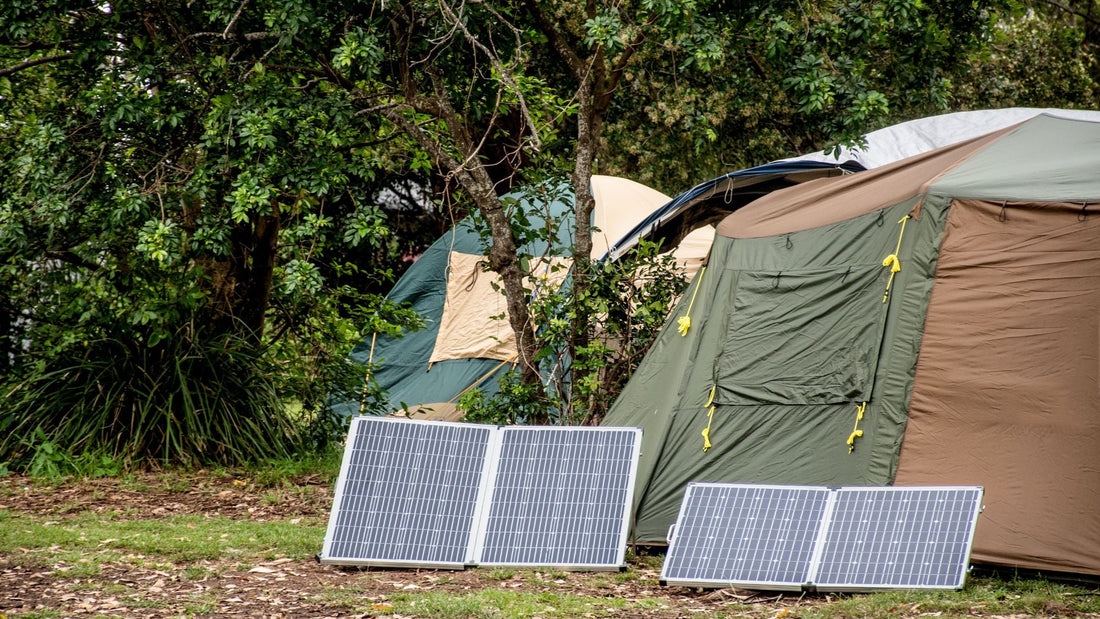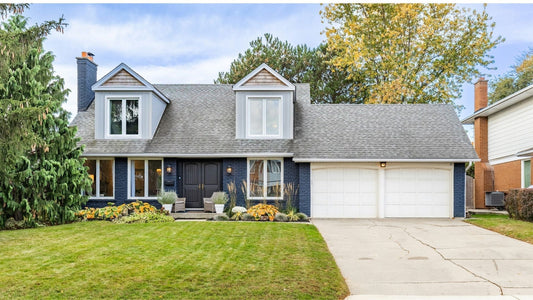Are you an avid camper who loves to explore the great outdoors while staying connected to the modern world? If so, setting up solar power for your camping adventures can be a game-changer. By harnessing the power of the sun, you can enjoy the convenience of electrical energy while minimizing your carbon footprint. In this comprehensive guide, we will walk you through the process of setting up solar for camping, from choosing the right equipment to optimizing its usage. Let's embark on a journey towards sustainable and independent camping power!
Understanding the Benefits of Solar Power for Camping
Before diving into the setup process, let's first explore the numerous benefits of using solar power for camping. Here are some key advantages:
1. Clean and Renewable Energy
Solar power is a clean and renewable energy source. By harnessing sunlight, you can generate electricity without producing harmful emissions or relying on finite fossil fuels. It's a sustainable way to power your camping adventures while minimizing your impact on the environment.
2. Energy Independence
Setting up a solar power system for camping provides you with energy independence. Instead of relying on traditional power sources or generators, you can generate your electricity wherever the sun shines. This independence allows you to explore remote locations without worrying about access to electrical outlets.
3. Cost Savings
While the initial investment in solar equipment may seem higher, it can lead to long-term cost savings. Once your solar system is set up, you can enjoy free energy from the sun, reducing or eliminating the need to purchase fuel or pay for campground electrical hookups. Over time, the savings can offset the initial setup costs.
4. Quiet and Eco-Friendly Operation
Solar power systems operate silently, unlike noisy generators. This ensures a peaceful camping experience for you and those around you. Additionally, solar power is an eco-friendly alternative that doesn't contribute to noise pollution or disturb wildlife.
5. Versatility and Mobility
Solar power systems for camping come in various sizes and configurations, offering flexibility and mobility. Whether you prefer lightweight portable panels or integrated solar setups, you can find a solution that fits your camping style. Solar panels can be easily transported and set up, allowing you to adapt to different camping locations.
Now that you understand the benefits, let's explore the essential solar equipment needed for camping.
Essential Solar Equipment for Camping
To set up a solar power system for camping, you'll need the following key components:
1. Solar Panels
Solar panels are the heart of your solar power system. They capture sunlight and convert it into usable electricity. When choosing solar panels for camping, consider factors such as size, portability, and power output. Look for lightweight and compact panels that are easy to transport and set up at your campsite.
2. Solar Charge Controllers
Solar charge controllers regulate the flow of electricity from the solar panels to the batteries. They prevent overcharging and ensure the batteries receive the right amount of charge. Look for charge controllers with built-in features such as battery temperature compensation and multiple charging modes for optimal battery health and performance.
3. Batteries
Batteries store the electricity generated by the solar panels for later use. Deep cycle batteries, such as lithium-ion or AGM batteries, are commonly used for camping setups. They can withstand regular discharge and recharge cycles without degrading their performance. Determine your power needs to determine the appropriate battery capacity for your camping setup.
4. Inverters
Inverters convert the stored DC (direct current) power from the batteries into AC (alternating current) power, which is compatible with most of your camping appliances and devices. If you plan to power AC devices like laptops, fans, or CPAP machines, ensure the inverter you choose has the necessary power rating and outlets.
5. Cables and Connectors
High-quality cables and connectors are essential for efficient power transfer between the solar panels, charge controllers, batteries, and inverters. Opt for cables with proper gauge and connectors that are compatible with your equipment. Ensure they are durable and weather-resistant for outdoor use.
Now that you have an understanding of the essential solar equipment, let's move on to determining your power needs.
Determining Your Power Needs
Before finalizing your solar setup, it's crucial to assess your power needs. Consider the following factors:
1. Identify Your Camping Appliances and Devices
Make a list of the appliances and devices you plan to power during your camping trips. This may include lights, fans, mobile devices, laptops, CPAP machines, refrigerators, or cooking equipment. Note down their power ratings in watts.
2. Calculate Daily Energy Consumption
Estimate the number of hours you expect to use each device daily. Multiply the power rating of each device by the number of hours to determine the daily energy consumption in watt-hours (Wh). Add up the energy consumption of all devices to get a total energy requirement for a typical camping day.
3. Account for Energy Losses and Efficiency
Keep in mind that not all the energy generated by the solar panels will reach your devices due to system losses and inefficiencies. Account for these losses when sizing your solar setup. A general rule of thumb is to add an additional 20-30% to your daily energy requirement to ensure sufficient power supply.
By accurately assessing your power needs, you can select the right solar setup for your camping style. Let's explore the different solar setups available.
Choosing the Right Solar Setup for Your Camping Style
Camping setups vary based on individual preferences, available space, and power requirements. Here are some popular solar setups for camping:
1. Portable Solar Panels
Portable solar panels are versatile and easy to set up. They usually come with a folding design and a built-in stand for convenient positioning towards the sun. Portable panels are ideal for campers who prioritize flexibility and mobility. You can position them at the optimal angle for maximum sunlight exposure throughout the day.
2. Solar Generator Kits
Solar generator kits provide a complete solution for portable power. They typically include a solar panel, a charge controller, a battery, and sometimes an inverter. Solar generator kits are user-friendly and often come in a compact and integrated design. They are suitable for campers who prefer a plug-and-play solution without the need for separate components.
3. Foldable Solar Panels
Foldable solar panels offer a balance between portability and power output. They feature multiple panels connected together, which can be folded and unfolded as needed. Foldable panels are lightweight and easy to transport. They are ideal for campers who want a slightly larger power capacity while maintaining portability.
4. Solar Backpacks
Solar backpacks are a unique and compact solution for charging small electronic devices while on the move. These backpacks feature built-in solar panels on the exterior, allowing you to charge devices directly from the backpack's USB ports. Solar backpacks are suitable for hikers, backpackers, or those who prefer a minimalist camping setup.
5. Solar-Powered Camping Gear
In addition to solar panels and generators, there is a range of solar-powered camping gear available. This includes solar-powered lanterns, fans, chargers, water filters, and even cooking gear. These accessories utilize built-in solar panels to provide sustainable and eco-friendly solutions for various camping needs.
Choose the solar setup that aligns with your camping style, power requirements, and preferences. Once you have selected the right setup, it's time to set up your solar system.
Setting Up Your Solar System for Camping
Setting up a solar system for camping involves a few key steps. Follow this guide to ensure a successful installation:
1. Find a Suitable Location
Choose a camping location with ample sunlight exposure throughout the day. Look for an open area with minimal shade from trees or other objects. Position your solar panels in a way that maximizes their exposure to the sun.
2. Mount or Position the Solar Panels
If you have portable or foldable solar panels, use the built-in stands or mounting brackets to position them at the desired angle and direction. Ensure they are securely placed on the ground or mounted on a stable surface. If using solar backpacks, wear them outdoors during the day to allow the panels to absorb sunlight.
3. Connect the Solar Panels
Connect the solar panels to the charge controller using the appropriate cables and connectors. Follow the manufacturer's instructions for proper connection. Ensure all connections are secure and tight to prevent any power loss.
4. Connect the Charge Controller to the Battery
Connect the charge controller to the battery using the designated cables. Pay attention to the polarity to avoid any damage or electrical issues. Double-check the connections to ensure they are properly secured.
5. Connect the Inverter (If Applicable)
If you plan to use AC devices, connect the inverter to the battery following the manufacturer's instructions. Ensure the inverter is properly sized to handle the power requirements of your devices.
6. Test the System
Once all connections are made, test the system by turning on your devices. Monitor the battery level, charge controller readings, and inverter operation (if applicable). Ensure everything is functioning correctly and that your devices are receiving power.
Congratulations! You have successfully set up your solar system for camping. Now you can enjoy the benefits of clean and sustainable energy during your outdoor adventures.
Optimizing Solar Power Usage
To make the most of your solar setup, consider the following tips for optimizing power usage:
1. Practice Energy Efficiency
Be mindful of your energy consumption and practice energy-efficient habits. Turn off devices when not in use, use LED lights instead of incandescent bulbs, and choose low-power alternatives whenever possible.
2. Charge During the Day
Take advantage of daylight hours to charge your devices and replenish your battery. This way, you can avoid draining your battery during the night when solar power is unavailable.
3. Monitor Battery Levels
Keep an eye on your battery levels and avoid over-discharging. Deep cycling your battery excessively can shorten its lifespan. If necessary, prioritize essential devices or invest in additional battery capacity.
4. Clean and Maintain Solar Panels
Regularly clean your solar panels to remove dust, debris, or any obstructions that may affect their efficiency. Follow the manufacturer's recommendations for cleaning and maintenance to ensure optimal performance.
Setting up solar power for camping opens up a world of possibilities, allowing you to enjoy the great outdoors while staying connected and sustainable. By understanding the benefits of solar power, choosing the right equipment, determining your power needs, and following the installation steps, you can create a reliable and efficient solar system for your camping adventures. Embrace the power of the sun and embark on an eco-friendly journey in nature!




